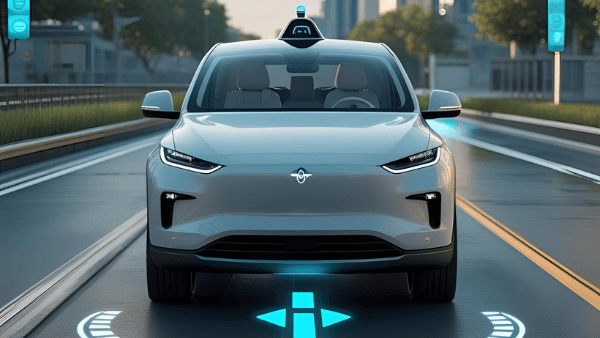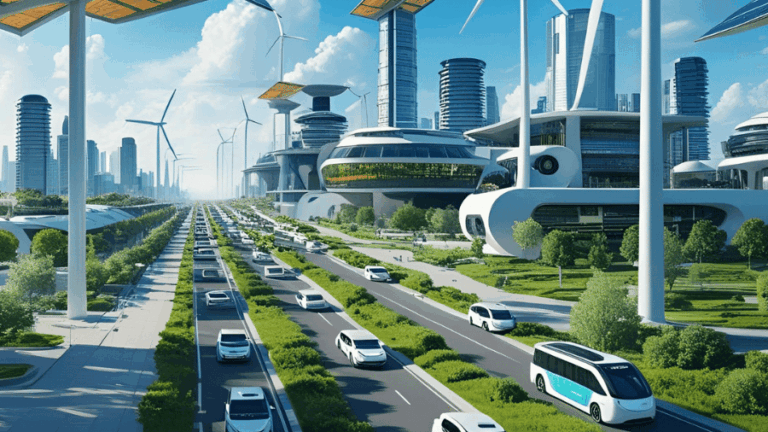The Future of Vehicles: How Automotive Technology Is Driving 2025 Forward

The future of vehicles is no longer a distant vision — it’s being engineered on the roads, in R&D labs, and in boardrooms across the globe. In 2025, automotive technology is not just transforming how we drive but redefining what a vehicle actually is. We are seeing a convergence of electrification, automation, AI integration, and connected infrastructure, ushering in an era where vehicles are intelligent, sustainable, and safer than ever. With rapid innovation from companies like Tesla, Waymo, BYD, Nvidia, and traditional OEMs, mobility is entering a new chapter that touches every aspect of daily life.
One of the most talked-about innovations shaping the future of vehicles is autonomous driving. While fully self-driving cars (Level 5 autonomy) are still in testing phases, many commercial vehicles now support Level 2 and Level 3 autonomy. Cars can automatically steer, accelerate, brake, change lanes, and park without direct human input, although human oversight is still required. Tesla’s Full Self-Driving Beta, Mercedes’ Drive Pilot, and Waymo’s robotaxis are examples of this transitional stage. According to The Verge, the auto industry is investing billions into computer vision, sensor fusion, and LIDAR to make self-driving safer and more accessible. Cities like San Francisco, Phoenix, and Beijing are already permitting autonomous taxis in controlled zones, indicating strong momentum.
Equally transformative is the acceleration of electric vehicles (EVs). The shift from internal combustion engines to electric drivetrains is not just about cleaner energy; it’s about reinventing vehicle design, efficiency, and performance. In 2025, EVs from companies like Tesla, BYD, Hyundai, and Volkswagen dominate headlines. The popularity of models like the Tesla Model Y, BYD Seal, and Kia EV6 show that consumers are embracing electric cars not just for their sustainability, but for their speed, torque, and modern tech features. Battery technology continues to improve, with solid-state batteries promising greater energy density, faster charging, and enhanced safety. Public and private sector initiatives are also expanding EV infrastructure — India’s FAME II policy and the U.S. National Electric Vehicle Infrastructure (NEVI) plan are just a few examples.
AI is becoming a silent co-pilot in every vehicle. Smart cars now come with virtual assistants that personalize your ride — adjusting seats, climate, and playlists based on voice recognition or biometric scans. Systems like Amazon Alexa Auto, Apple CarPlay, Android Auto, and OEM-specific AIs like MBUX (Mercedes) and BMW iDrive can read messages aloud, suggest alternate routes, or even detect driver fatigue using interior cameras. The AI isn’t limited to convenience. It’s also used for predictive maintenance, identifying issues before they cause breakdowns, and edge computing, where real-time data processing happens inside the car without relying on the cloud. This onboard intelligence ensures both user comfort and vehicle longevity.
Another pillar of the future of vehicles is V2X communication — Vehicle-to-Everything. This technology enables cars to communicate with each other (V2V), infrastructure like traffic signals (V2I), and even pedestrians (V2P). With 5G and edge AI, V2X makes roads smarter and travel safer. Imagine a car automatically braking because it received a signal from another car about a collision ahead — or adjusting its route because the city’s traffic management AI rerouted traffic based on real-time conditions. Companies like Qualcomm and NXP are pushing V2X chipsets into production, and countries like Japan and Germany are integrating V2X in smart city roadmaps. This aligns with broader goals of reducing urban congestion and carbon footprints, which we explored in our Green Technology in 2025 blog.
While automation and electrification get most of the attention, the user experience inside vehicles is undergoing a renaissance. Modern cars now resemble mobile lounges, equipped with massive touchscreens, voice control, gesture input, and panoramic augmented reality displays. The Hyundai IONIQ 6, for example, features mood lighting, ergonomic seating, and a digital cockpit that changes themes depending on time or driving style. Startups are also designing modular interiors, where seats swivel to form workspaces or entertainment zones, especially in vehicles intended for ride-sharing. As work-from-anywhere culture grows, cars might soon become remote offices — a topic that complements what we discussed in our article on AI Co-Pilots at Work.
Sustainability also plays a major role in the design of the future vehicle. Auto manufacturers are increasingly using recycled materials for interiors, such as plant-based leather and reclaimed plastics. Entire dashboards are being built from ocean-recycled materials or biodegradable composites. Leading the charge are brands like Polestar, which now publishes a full carbon footprint for each model. In India, startups like Euler Motors and Ather Energy are building fully electric, recyclable delivery vehicles for the last-mile economy. This speaks to a growing consumer demand for transparency and accountability in production — aligning with themes from our Ethical Tech blog on responsible innovation.
The rise of shared mobility platforms is another defining characteristic. With companies like Uber, Lyft, Ola, and Zoomcar integrating electric fleets and autonomous trials, owning a personal car is becoming less necessary in urban areas. Subscription models, where users pay monthly for flexible access to vehicles, are gaining traction among Gen Z consumers who prioritize convenience and sustainability. Car-as-a-Service (CaaS) could be the dominant business model of the next decade.
Cybersecurity is a new battleground in the automotive world. As cars become rolling computers, they’re also vulnerable to hacking, data theft, and ransomware. Car manufacturers are investing heavily in in-vehicle cybersecurity, with secure boot systems, over-the-air (OTA) patching, and intrusion detection algorithms. Regulatory bodies are also stepping in — the UN’s WP.29 regulation mandates that all connected vehicles meet specific cybersecurity and software update standards by 2024–25. This is particularly important as over 70% of new cars sold globally by 2025 are expected to be connected to the internet, according to McKinsey’s Automotive Trends Report.
In terms of global mobility, the future of vehicles goes far beyond private ownership. Electric buses, autonomous shuttles, and AI-powered metro systems are reshaping public transport. Cities like Singapore, Seoul, and Helsinki are trialing Mobility-as-a-Service (MaaS) platforms, where users can plan, book, and pay for all types of travel within a single app. Whether you’re renting an e-bike or catching an AI-optimized shuttle, these ecosystems reduce emissions and improve city flow. This mirrors some of the developments discussed in our upcoming series on urban AI mobility.
As we reflect on the current state of automotive technology, one thing is clear — we’re not just changing vehicles; we’re changing how society moves. With each advancement in automation, sustainability, and intelligence, the car of tomorrow becomes a device that adapts to its environment, learns from its driver, and aligns with global climate goals.
The future of vehicles in 2025 is driven by more than horsepower. It’s powered by AI, defined by software, and guided by ethical and environmental consciousness. From robotaxis to EVs with personality, we’re witnessing the dawn of a new mobility paradigm — one that’s cleaner, safer, and smarter.
Stay tuned as The Visionary Spark continues to uncover how these innovations connect to other technologies transforming our world. Next up: smart cities and the rise of autonomous infrastructure.



